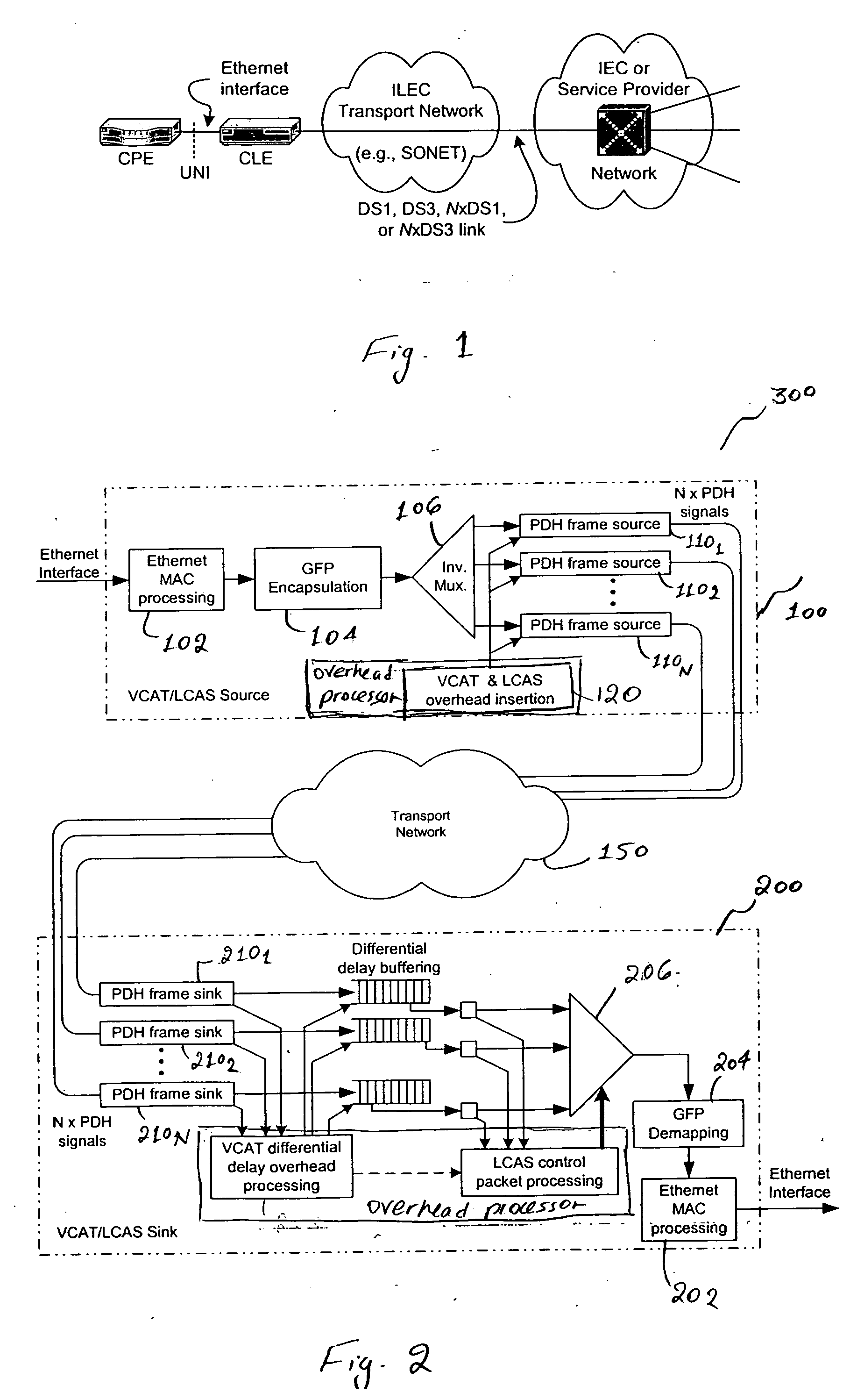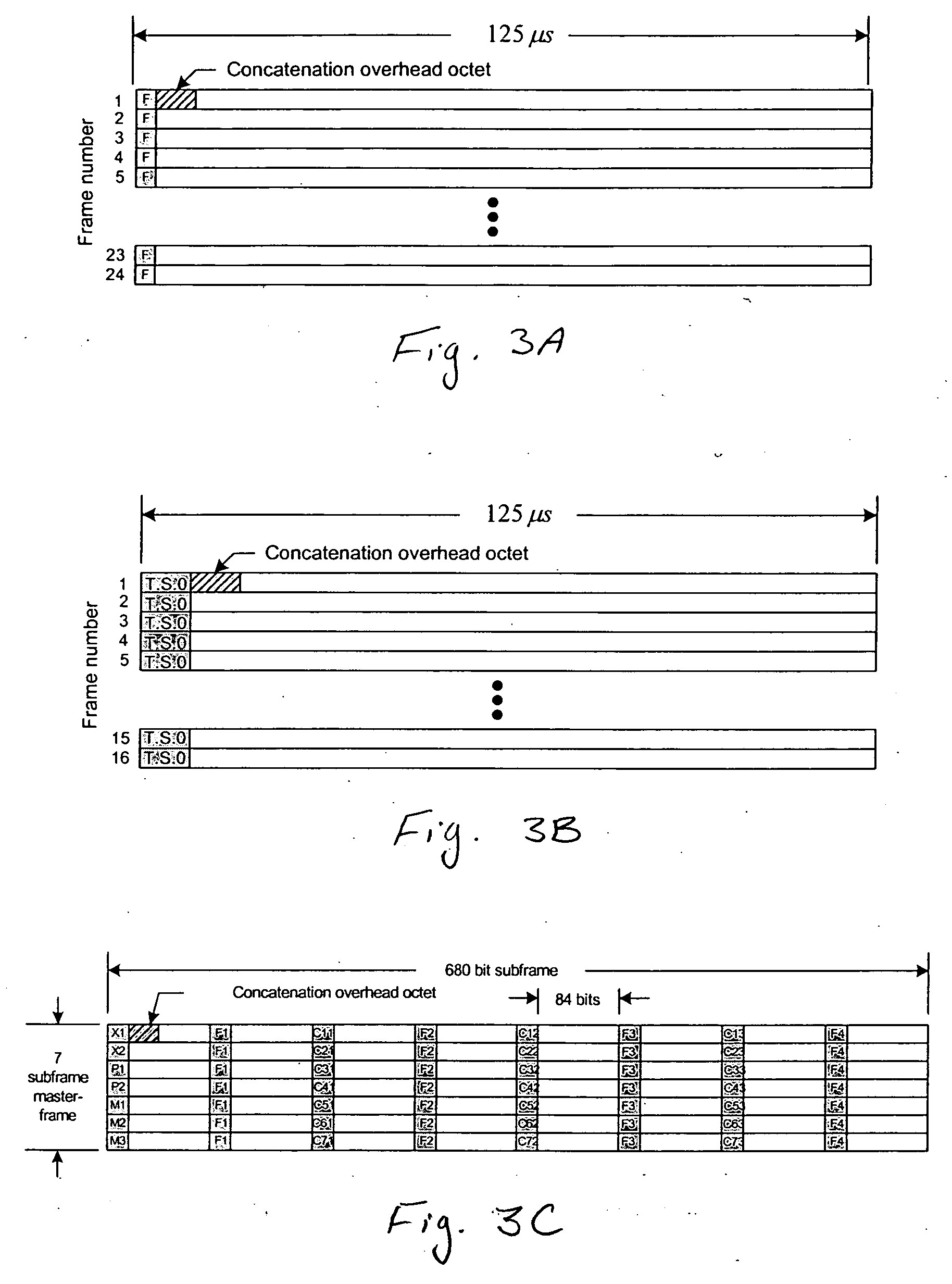Virtual concatenation of PDH signals
a virtual concatenation and signal technology, applied in the field of virtual concatenation of pdh signals, can solve the problems of insufficient overhead bandwidth to carry the information required for the virtual concatenation differential delay compensation
- Summary
- Abstract
- Description
- Claims
- Application Information
AI Technical Summary
Benefits of technology
Problems solved by technology
Method used
Image
Examples
Embodiment Construction
[0025]FIG. 2 is a high-level block diagram of a network system 300, in accordance with one embodiment of the present invention. An incoming data signal, such as a native Ethernet signal, is received via an interface at the source 100 and is first processed at Ethernet MAC processing block 102 to ensure that it is a valid Ethernet frame. Thereafter the data is encapsulated in a frame for transmission using, for example, a Generic Framing Procedure (GFP) frame). The GFP standard is defined, in ITU-T Recommendation G.7041. Other encapsulation protocols, e.g., byte-oriented HDLC, may also be used. The encapsulated data is then inverse-multiplexed using inverse multiplexer 106 at the byte level into N PDH frames 110 (signals), namely PDH frames 1101, 1102 . . . 110N. As shown, the associated virtual concatenation (VCAT) and Link Capacity Adjustment Scheme (LCAS) overheads are added to these signals by overhead processor 120, subsequent to which the signals are transmitted over transport ...
PUM
 Login to View More
Login to View More Abstract
Description
Claims
Application Information
 Login to View More
Login to View More - R&D
- Intellectual Property
- Life Sciences
- Materials
- Tech Scout
- Unparalleled Data Quality
- Higher Quality Content
- 60% Fewer Hallucinations
Browse by: Latest US Patents, China's latest patents, Technical Efficacy Thesaurus, Application Domain, Technology Topic, Popular Technical Reports.
© 2025 PatSnap. All rights reserved.Legal|Privacy policy|Modern Slavery Act Transparency Statement|Sitemap|About US| Contact US: help@patsnap.com



